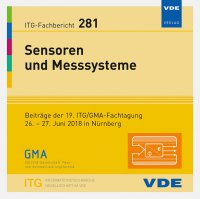Data transmission by guided acoustic waves
Conference: Sensoren und Messsysteme - 19. ITG/GMA-Fachtagung
06/26/2018 - 06/27/2018 at Nürnberg, Deutschland
Proceedings: Sensoren und Messsysteme
Pages: 4Language: englishTyp: PDF
Personal VDE Members are entitled to a 10% discount on this title
Authors:
Ritter, Frank; Krempel, Sandro; Tietze, Sabrina; Backer, Alexander; Wolfschmitt, Andre; Drese, Klaus Stefan (Institute of Sensor and Actuator Technology, Coburg University of Applied Sciences and Arts, 96450 Coburg, Germany)
Abstract:
Conventional data transmission via cable or electromagnetic waves reaches their limits in harsh or hard-to-reach environments. For example in bore hole inspection, cables can break and electromagnetic waves cannot pass different earth layers. Actual studies showing that guided waves are a possible instrument for cable less data transmission. The known technique works with frequencies below 100 kHz for a wave propagating of long distances and known time delays. This concept limits the data transmission rate to e.g. 250 bit/s at a 2m long steel pipe. Other cable less developments are also known in so-called “wall to wall” communication by means of ultrasonic sound waves. Here, frequencies of 1 MHz are used to transmit data in the order of 550 bit/s through one wall with opposing transducers. In our approach we are using guided waves with a center frequency of 1 MHz. Furthermore a sweep mode is used instead of the pulse position modulation (PPM). Thus, it is possible to be independent of a known transmitter and receiver position and thereby the knowledge of the time delay. Thereby, in contrast to the already known technology it is possible to use a two-dimensional arbitrary surface for data communication. At a first experiment, a data transmission distance of 20 cm at a 3 mm glass plate was build. One single-phase transducer is used as transmitter and two different transducers as receiver to show the independence of position of the receiver. Wave reflections at the edges of the glass plate and dispersion of the guided wave could also be eliminated by the here used algorithm of identifying the biggest amplitude of the received signal. Thereby a transmission rate of 1,5 kBit/s with good SNR could be observed.


